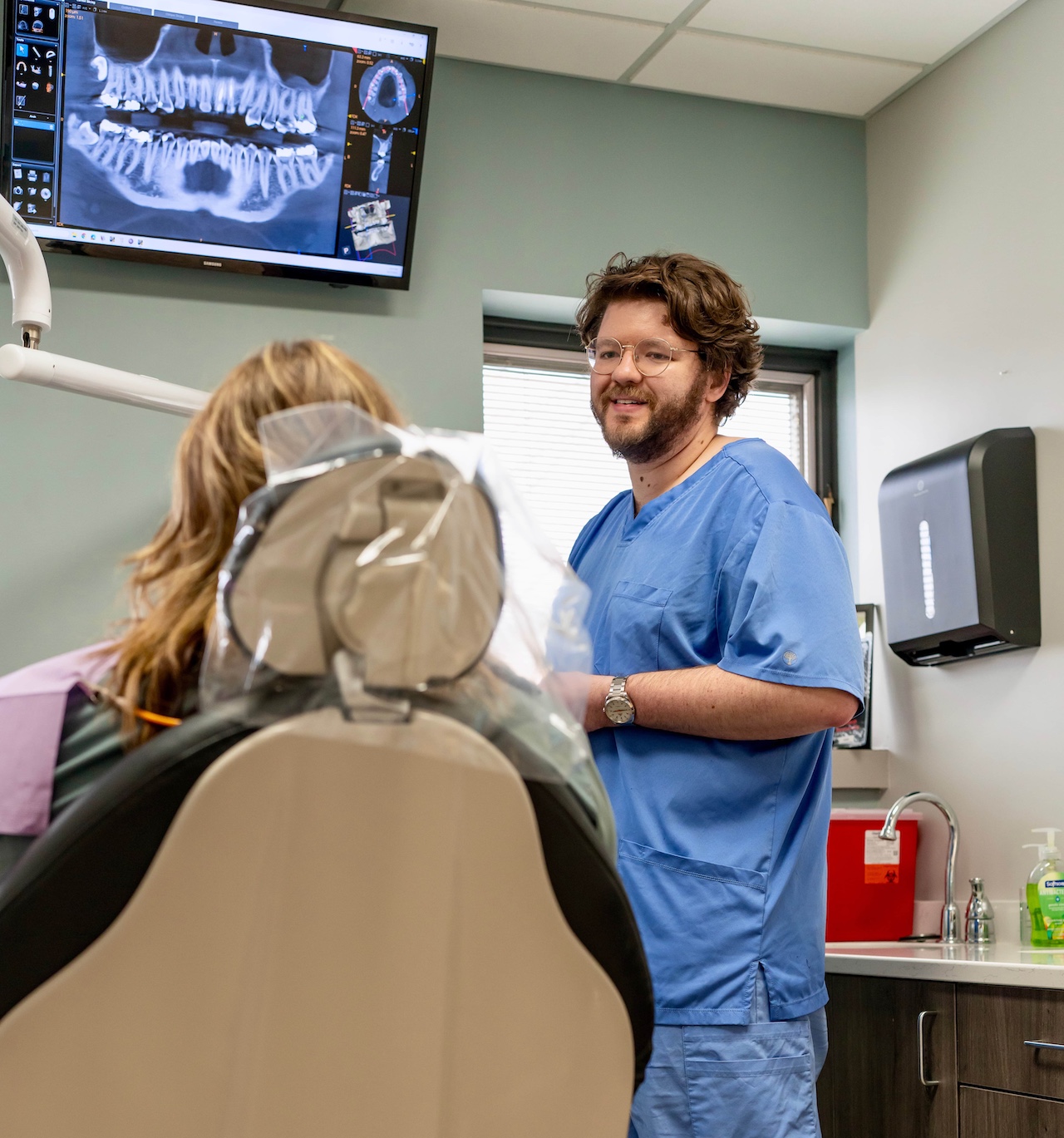The trouble with toothaches is that they pop up without warning, often inconveniencing your life. While it is true that you can’t schedule a toothache like you can an appointment, there are things you can do to troubleshoot the toothaches that come your way.
Going To the Source
Troubleshooting is a logical, systematic search looking for the source of a problem in order to solve it, and make it work properly again. One of the most common sources of toothaches is decay. Ironically, the main use we have for our teeth, chewing food, is also the main source of harm! It makes sense that dental caries, or decay, is one of the most common diseases found. It is almost as ordinary as the common cold. No one is immune from the danger. From young children to older adults, all can suffer from tooth decay.
It starts when saliva enzymes, that help to break down food, create an acidic byproduct. This acid silently (and initially painlessly) bathes our teeth in a dangerous solution that erodes the protective layer of enamel that cover them. Today’s culture of consuming a greater number of smaller meals each day, as well as the high consumption of soda pop in the United States, leaves your pearly whites in near constant state of danger. Acid will pool in the grooves of the molars and the ridges along the gumline. Food stuck in between teeth provide a food supply for this plaque bacteria. It dissolves a pit, or cavity, in the enamel. Having a dry mouth, or too little saliva, is also damaging because there is not enough saliva to rinse food particles off the teeth and out of the mouth.
Are All Cavities Created Equal?
The first sign that tooth decay is occurring is when chalky white areas on the surface of the tooth appear. The good news is decay in these early stages is reversible! Simply brushing daily with a soft bristle toothbrush and a fluoride toothpaste, and flossing will help your teeth to repair this damage.
But if left undisturbed, the acid will completely eat through a portion of enamel. At this stage, pain emerges as the decay nears nerves and blood vessels in the center of the tooth. It may just be an achiness or sensitivity to hot or cold foods and sweets. Sometimes you can even see the pit in the tooth!
It is important not to dismiss this initial pain or discomfort. Don’t make the mistake of thinking one tiny cavity is not a big deal. One cavity can lead to further dental problems! The damaged tooth is not as strong, and is susceptible to breaking, gum disease, or dental abscesses. You may even lose the tooth, resulting in an extraction.
What Can I Do?
Like to chew gum? It can be as easy as popping in a piece in your mouth. Sugar-free gum has been linked to remineralization of enamel in clinical trials as well as changing the pH of your mouth to a more hospitable place. You can also chew (or choose) food that will help your teeth! Some foods like apples have added benefits of scrubbing your teeth as you chew. Try to avoid frequent snacking. It will help your health in more ways than one! Drink plenty of water. It not only washes food particles off your teeth, but the fluoride in tap water also helps repair enamel damage.
If your cavity needs attention, don’t be afraid to call us! Some teeth can be repaired by removing the decay and filling the hole left in the tooth with a hard substance. Other times a root canal or crown may be needed. Remember, damage and expense are minimized when you see your emergency dentist at the early signs of decay.
We are here to help take the inconvenience out of your toothache as much as possible. Our convenient hours and payment plans are meant to help ease the stress experienced when toothaches hit and get your mouth back to health. Call us today!
